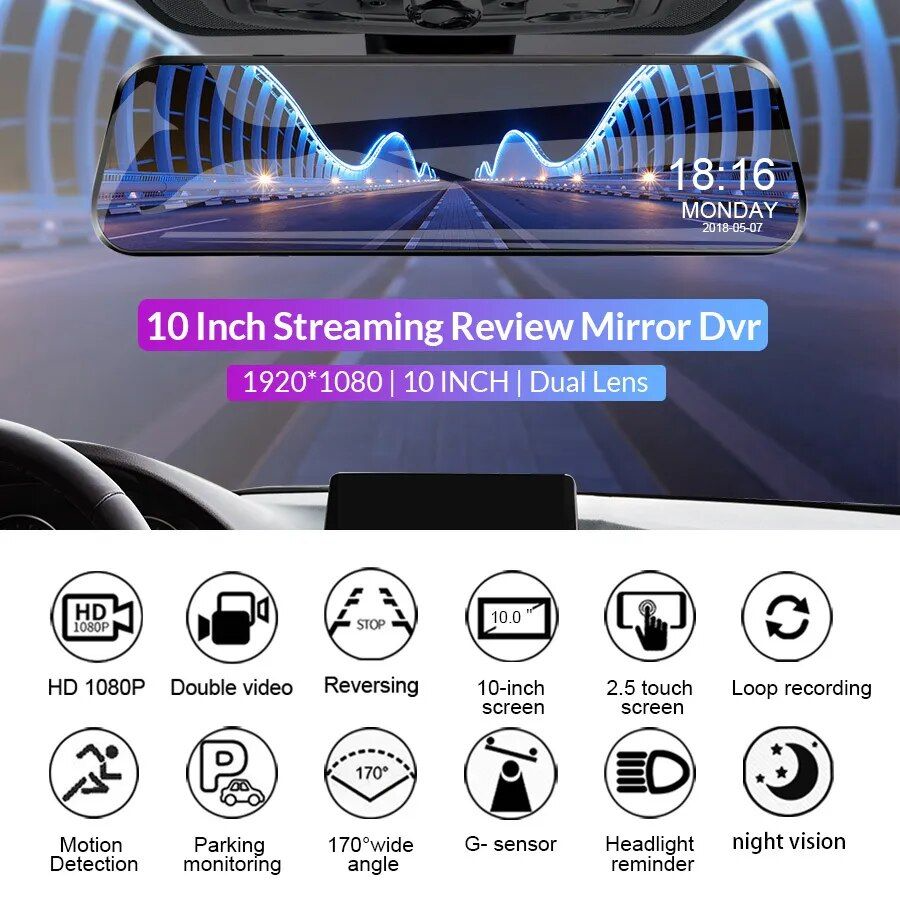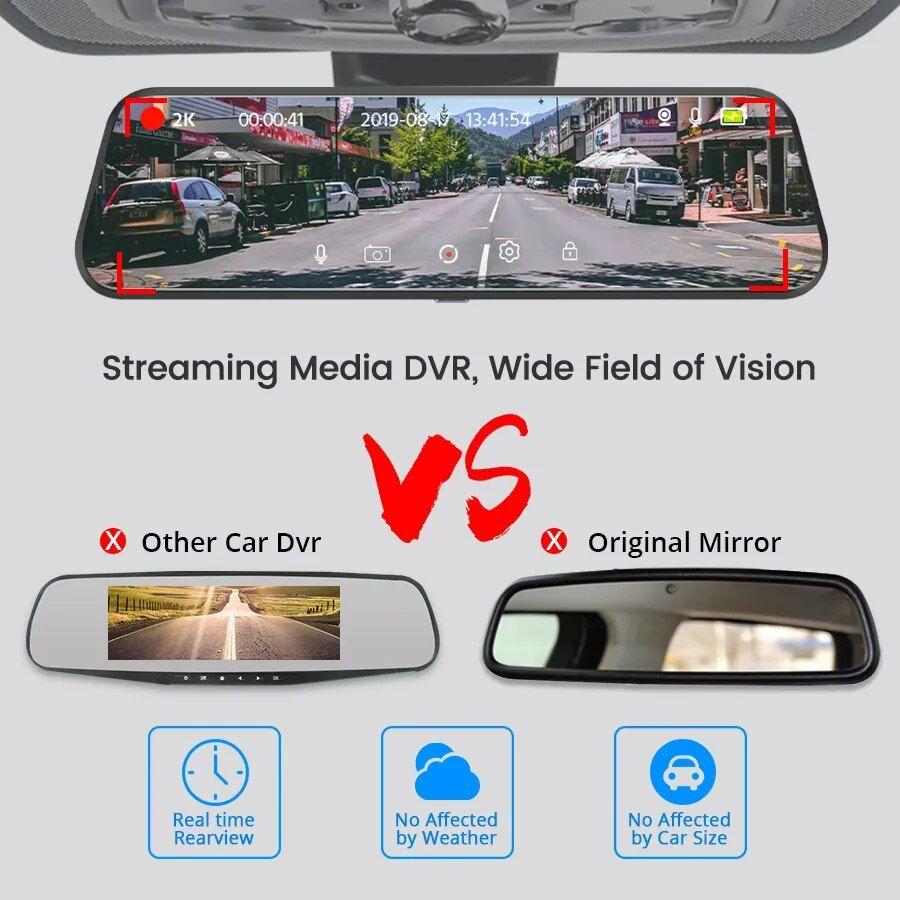
What is a Rearview Mirror Dash Cam?
A rearview mirror dash cam is a device that integrates a dash cam into a rearview mirror, providing a seamless and unobtrusive way to record your driving. Unlike traditional dash cams that are mounted on the windshield, these devices replace or attach to your existing rearview mirror. This integration offers several benefits, including a cleaner look, less distraction, and the ability to use the mirror as a display screen for the camera footage.
Key Features of Dual FHD Cameras:
Dual FHD cameras refer to the presence of two Full High Definition cameras in the dash cam system—one facing the front and the other facing the rear. This setup ensures that both the road ahead and behind are recorded in high clarity. Key features to look for include:
– **Resolution:** Look for cameras with at least 1080p resolution for clear and detailed footage.
– **Frame Rate:** A higher frame rate (e.g., 30fps) ensures smoother video playback.
– **Wide-Angle Lens:** A wide-angle lens (e.g., 170 degrees) captures more of the surroundings.
– **Example Images:** [Insert example images showing the clarity of FHD cameras]
Importance of Night Vision:
Night vision technology is crucial for capturing clear footage in low-light conditions. This feature enhances safety by providing better visibility during nighttime driving and parking. Different night vision technologies include:
– **Infrared (IR) LEDs:** These provide illumination that is invisible to the human eye but can be captured by the camera.
– **Low-Light Sensors:** These sensors enhance the camera’s ability to capture details in low-light conditions.
– **Example Videos:** [Embed example videos demonstrating night vision capabilities]
How to Install a Rearview Mirror Dash Cam:
Installing a rearview mirror dash cam is straightforward with the right tools and steps:
– **Step-by-Step Guide:**
1. Remove the existing rearview mirror (if necessary).
2. Attach the dash cam to the mirror mount or over the existing mirror.
3. Connect the power cable to the car’s power source.
4. Route the cables neatly along the windshield and dashboard.
5. Adjust the camera angles for optimal coverage.
– **Required Tools and Materials:** Screwdriver, cable clips, power adapter.
– **Tips for Seamless Installation:** Ensure cables are hidden to avoid distractions.
– **Video Tutorial:** [Embed video tutorial]
Customer Reviews and Testimonials:
Here are some customer reviews from various platforms:
– **Review 1:** “The dual FHD cameras provide crystal clear footage, and the night vision is impressive. Installation was a breeze!” – Sergio
– **Review 2:** “I love the 10-inch touchscreen and the ease of use. The night vision feature is a game-changer for nighttime driving.” – Mark
– **Review 3:** “Great value for money. The video quality is top-notch, and the parking mode has already saved me from a potential hit-and-run.” -Michael

Frequently Asked Questions (FAQs):
– **Q: Are rearview mirror dash cams compatible with all vehicles?**
– **A:** Most rearview mirror dash cams are designed to be universally compatible, but it’s always best to check the product specifications.
– **Q: Do these dash cams come with a warranty?**
– **A:** Yes, most reputable brands offer a warranty ranging from 1 to 2 years.
– **Q: How do I maintain my dash cam?**
– **A:** Regularly clean the camera lenses, update the firmware, and check the memory card for any issues.

Rearview mirror dash cams with dual FHD cameras and night vision are a valuable addition to any vehicle, enhancing safety and convenience. With the right features and proper installation, these devices can provide peace of mind and a better driving experience. Consider upgrading your vehicle with one of the top-rated models reviewed in this guide. Visit the product pages, read more reviews, and make an informed purchase today.
Leave a comment